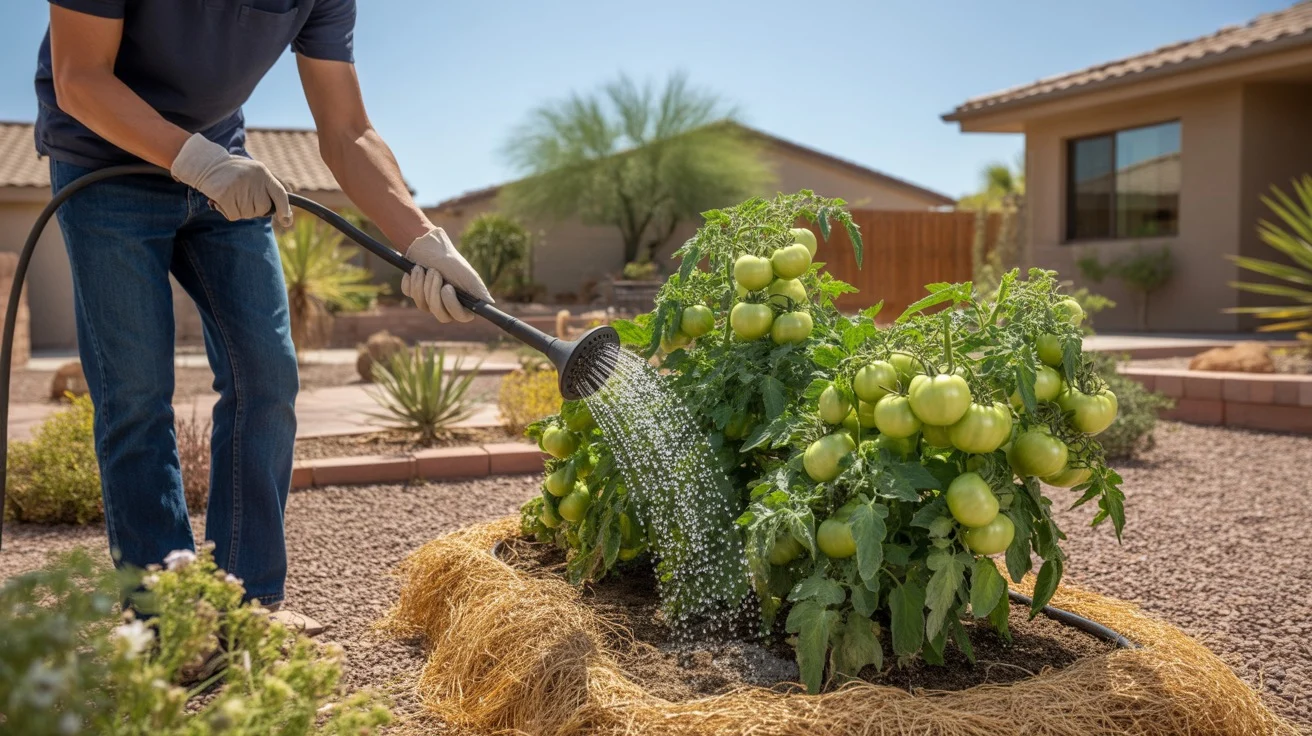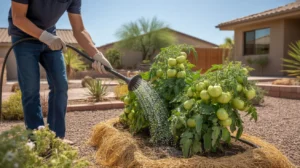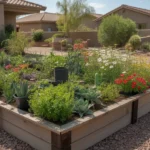August in Gilbert can be a challenging month for gardeners, with scorching temperatures and intense sun threatening to wilt even the hardiest plants. But with a few smart strategies, you can keep your garden green and productive all month long. Here’s how to help your plants survive and thrive in the peak of summer. 🌿☀️
Water Wisely 💧
Proper watering is crucial in August. Water deeply and less frequently to encourage deep root growth. Aim to water in the early morning, before the sun gets too intense, to minimize evaporation. Avoid overhead watering, which can scorch leaves and promote fungal growth. Instead, use a soaker hose or drip irrigation to deliver water directly to the roots.
For container plants, check soil moisture daily. Stick your finger into the soil up to the first knuckle. If it feels dry, it’s time to water. Potted plants may need watering twice a day in extreme heat. Consider moving containers to a shadier spot during the hottest part of the day.
Mulch heavily around plants to retain moisture and regulate soil temperature. A 3-4 inch layer of organic mulch like straw, shredded leaves, or wood chips will help keep roots cool and moist. Just be sure to keep mulch a few inches away from plant stems to prevent rot.
Harvest Regularly 🍅

Keep up with harvesting to encourage plants to continue producing. Vegetables like squash, cucumbers, and beans can quickly become oversized and bitter if left too long. Harvest in the morning when fruits are plump and firm.
For heat-loving crops like okra, peppers, and eggplant, regular picking will prompt the plant to flower and fruit more. Use scissors or pruners to cut fruits from the plant to avoid damaging stems.
Tomatoes may slow production in extreme heat. Pick any ripe fruits and consider shading plants during the hottest part of the day to prevent sunscald. Pinch off any flowers that form, as they’re unlikely to set fruit in high temperatures.
Provide Shade ⛱️
Even sun-loving plants can benefit from some shade in the intense August heat. Use shade cloth, row covers, or even old sheets to provide temporary relief during the hottest part of the day, typically 2-6pm.
For newly planted trees and shrubs, shade the trunk and root zone to prevent sunburn and heat stress. Use trunk wraps or set up a shade structure using stakes and cloth. Keep young plants well-watered as they establish.
Consider companion planting to provide natural shade. Taller plants like sunflowers or okra can shelter smaller, more delicate plants. Vining crops like pole beans or cucumbers grown on a trellis can shade the soil and neighboring plants.
Watch for Pests 🐞
Heat-stressed plants are more susceptible to pest damage. Watch for signs of infestation like holes in leaves, sticky residue, or misshapen fruits. Common August pests in Gilbert include aphids, whiteflies, and spider mites.
Blast pests off plants with a strong spray of water or use an insecticidal soap according to package directions. Neem oil can also help control many common pests. Avoid using harsh pesticides, which can harm beneficial insects like ladybugs and bees.
Encourage natural predators by planting flowers that attract them. Marigolds, zinnias, and cosmos will draw in ladybugs, lacewings, and parasitic wasps to keep pest populations in check. Inspect plants daily and hand-pick any visible pests.
Plan for Fall 🍂
August is a great time to start planning your fall garden. Many cool-season crops like broccoli, carrots, and lettuce can be started indoors now for planting out in September or October.
Clear out any spent summer crops and amend soil with compost to replenish nutrients. Consider planting a cover crop like buckwheat or clover to improve soil health and suppress weeds. As temperatures start to cool, you’ll be ready to plant your fall favorites.
With a little extra care, your Gilbert garden can stay vibrant and productive even in the peak of summer. By watering mindfully, providing shade, keeping up with harvests, and watching for pests, you’ll be rewarded with a bountiful August harvest. 🌽🥒🫑 And by planning ahead, you’ll set your garden up for a successful fall season. With these tips, your green thumb can survive the toughest month of the year!











